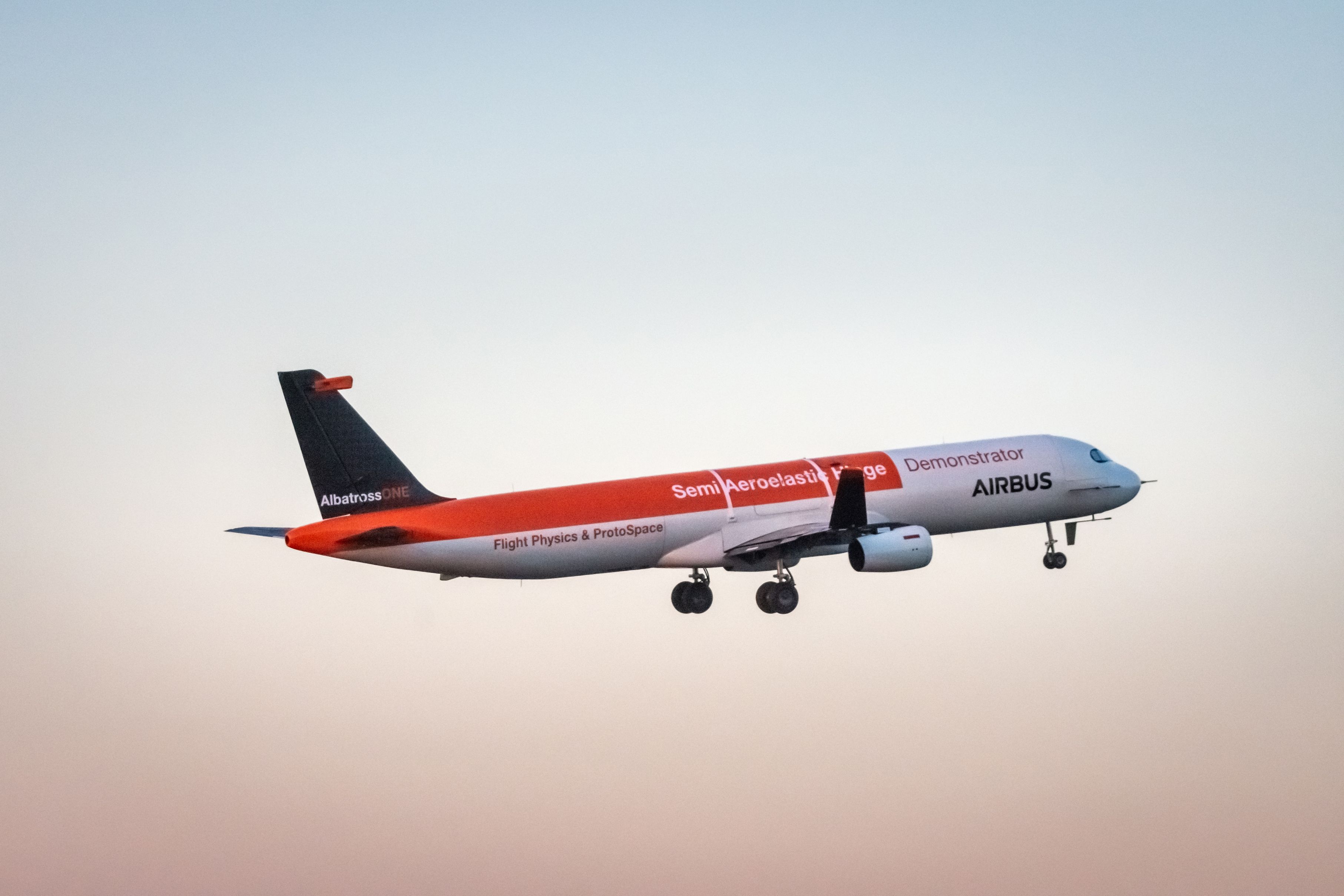Known as AlbatrossOne, the remote-controlled aircraft has already taken its first flights to prove the concept and the team will now conduct further testing before the demonstrator, based on the manufacturer's Airbus A321 single-aisle airliner, is scaled-up further. The first test flights of the AlbatrossOne demonstrator were concluded in February this year after a 20-month development programme.
While hinged wing-tips are not actually new and are already deployed on military jets to allow greater storage capacity on aircraft carriers - the Airbus scaled-demonstrator is the first aircraft to trial in-flight, freely-flapping wing-tips to relieve the effects of wind gusts and turbulence, according to Airbus engineers.

"We drew inspiration from nature - the albatross marine bird locks its wings at the shoulder for long-distance soaring but unlocks them when wind-gusts occur or manoeuvring is required," explains Tom Wilson, one of the engineers at its Filton facility in Bristol, UK that developed and tested the technology.
"The AlbatrossOne model will explore the benefits of unlockable, freely-flapping wing-tips - accounting for a up to a third of the length of the wing - to react autonomously during in-flight turbulence and lessen the load on the wing at its base, so reducing the need for heavily reinforced wing boxes," he adds.
Foe commercial airliners when there is a wind gust or turbulence, the wing of a conventional aircraft transmits huge loads to the fuselage, so the base of the wing must be heavily strengthened, adding weight to the aircraft. Allowing the wing-tips to react and flex to gusts reduces the loads and allows them to be manufactured lighter and even longer - the longer the wing, the less drag it creates up to an optimum, so there are potentially future fuel efficiencies that could be exploited.
The AlbatrossOne has been constructed from carbon fibre and glass fibre-reinforced polymers, as well as components from additive-layer manufacturing. Initial testing has examined the demonstrator's stability with the wing-tips locked and completely unlocked. "The next step is to conduct further tests to combine the two modes, allowing the wing-tips to unlock during flight and to examine the transition," according to Airbus engineers in Bristol.
Airbus says it has presented its research at the International Forum on Aeroelasticity and Structural Dynamics conference in the United States of America. The manufacturer is marking its 50th anniversary with various events over the past month, including a stunning flight with its current commercial jetliner family.
